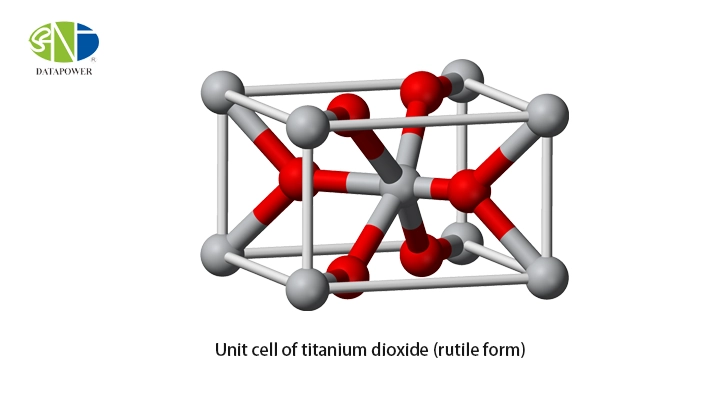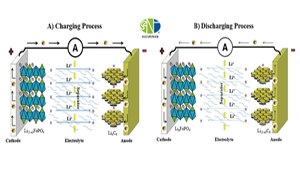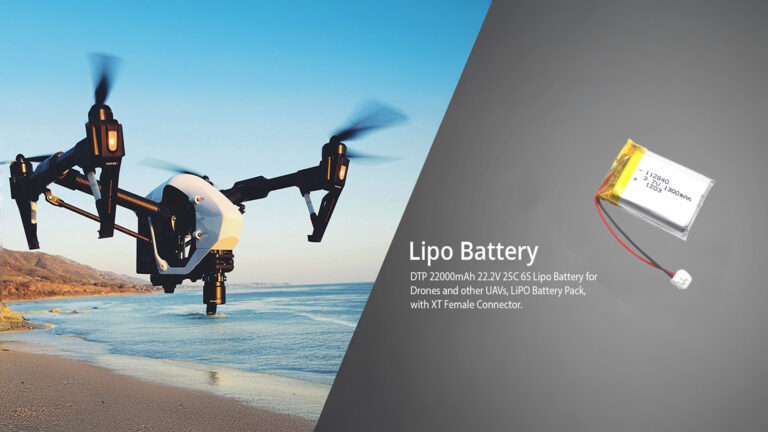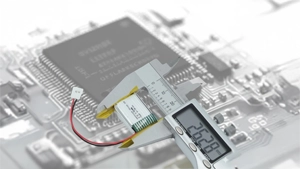I. Technical Definition and Core Characteristics
Lithium Polymer Batteries (Li-Po), developed from liquid lithium-ion battery technology, share the same cathode and anode materials as liquid batteries but utilize
gel electrolyte and
aluminum-plastic film packaging. This design delivers core advantages of
lightweight, high energy density, and high safety, gaining widespread recognition among global clients for Technical Analysis of Lithium Polymer Batteries.

| Model |
Dimensions (Thickness × Width × Height, mm) |
Nominal Capacity (mAh) |
Internal Resistance (mΩ, <) |
Nominal Voltage (V) |
| 3578131 |
3.5×78×131 |
4000 |
40 |
3.7 |
| 3463110 |
3.4×63×110 |
2700 |
40 |
3.7 |
| 3845120 |
3.8×45×120 |
2200 |
40 |
3.7 |
| 366090 |
3.6×60×90 |
2000 |
40 |
3.7 |
| 3435165 |
3.4×35×165 |
1800 |
40 |
3.7 |
| 2453135 |
2.4×53×135 |
1400 |
40 |
3.7 |
| 385085 |
3.8×50×85 |
1300 |
60 |
3.7 |
| 344461 |
3.4×44×61 |
1200 |
60 |
3.7 |
| 255480 |
2.5×52×80 |
1150 |
50 |
3.7 |
| 393278 |
3.9×32×78 |
1100 |
65 |
3.7 |
| 305060 |
3×50×60 |
900 |
40 |
3.7 |
| 383450 |
3.8×34×50 |
600 |
70 |
3.7 |
| 383450 |
3.8×34×50 |
450 |
80 |
3.7 |
| 233759 |
2.4×37×59 |
380 |
80 |
3.7 |
| 392339 |
3.9×23×39 |
330 |
80 |
3.7 |
| 302441 |
2.8×24×40.5 |
250 |
100 |
3.7 |
| 251776 |
2.5×17×76 |
230 |
120 |
3.7 |
| 302145 |
3×21×45 |
210 |
150 |
3.7 |
| 222530 |
2.5×25×30 |
120 |
180 |
3.7 |
| 321239 |
3.1×12×39 |
100 |
200 |
3.7 |
- Wound Type: Uses the same winding process as liquid lithium-ion batteries, winding cathode, anode, and electrolyte films, then packaging with aluminum foil. Suitable for large-scale production.
- Laminated Type: Uses hot-pressing technology to laminate cut cathode, anode, and electrolyte films, sealed with aluminum foil for higher structural flexibility.
- Gel Polymer Electrolyte Battery (GPE-LiPo): Adds conductive additives to solid polymer electrolytes, achieving room-temperature ionic conductivity of 10⁻³ S/cm for ambient operation.
- Solid Polymer Electrolyte Battery (SPE-LiPo): Electrolyte is a polymer-salt composite with low room-temperature conductivity (10⁻⁶ S/cm), suitable for high-temperature environments (>60°C).
- Composite Gel Polymer Cathode Battery (CPE-LiPo): Employs conductive polymers as cathode materials, offering 3× the specific energy of conventional lithium-ion batteries—next-generation technology.
| Technical Index |
Performance |
| Safety |
No liquid electrolyte; aluminum-plastic film housing resists explosion. Thermal runaway temperature >200°C, reducing fire/explosion risk by 90%. |
| Thinness |
6V/400mAh battery thickness down to 0.5mm, compatible with ultra-thin electronics. |
| Lightweight |
40% lighter than steel-cased Li-ion batteries, 20% lighter than aluminum-cased ones. Energy density increased by 15-20Wh/kg. |
| Sealing |
Solid gel electrolyte eliminates leakage risk, operating in -40°C~60°C wide temperature range. |
| Capacity Density |
10-15% higher capacity than steel-cased batteries, 5-10% higher than aluminum-cased ones. Typical value: 200-250mAh/cm³. |
| Internal Resistance |
Typical <35mΩ, supports >20C high-current discharge, power density 1500W/kg. |
| Structural Adaptability |
Customizable shapes (curved/ultra-thin/irregular) meet demands of wearables, drones, and other niche applications. |
- Voltage System
- Nominal Voltage: 3.7V (single cell)
- Charging Voltage: 4.1-5.0V (constant current/constant voltage charging)
- Discharge Cut-off Voltage: 2.8V, Storage Voltage: 3.7-3.8V
- Capacity Calculation
Empirical formula: Capacity (mAh) = Thickness (mm) × Width (mm) × Length (mm) × K (K=0.15-0.25mAh/mm³, adjusted by material system)
- Rate Characteristics
- Charge Rate: 0.5C-5C (1C = rated capacity current, e.g., 2A for 2000mAh battery)
- Discharge Rate: 1C-20C (continuous)/30C (peak), affected by internal resistance
- Operating Temperature: Charging 0-45°C, Discharging -20-60°C
- Storage Conditions: -20-35°C, humidity 45%-75%. Long-term storage requires 30-50% state of charge.
| Dimension |
Lithium Polymer Battery (Li-Po) |
Liquid Lithium-ion Battery (Li-ion) |
| Electrolyte Form |
Gel/solid, no flow risk |
Liquid organic electrolyte, requires rigid casing |
| Shape Adaptability |
Customizable (thickness <1mm) |
Cylindrical/rectangular, fixed shape |
| Energy Density |
200-250Wh/kg |
150-200Wh/kg |
| Safety |
Thermal runaway >200°C, no explosion risk |
Thermal runaway 150°C, requires protection circuit |
| Internal Resistance |
<50mΩ (typical) |
80-120mΩ |
| Production Cost |
High (complex aluminum-plastic film process) |
Low (mature steel/aluminum casing) |
| Cycle Life |
500-800 cycles (0.5C charge/discharge) |
300-500 cycles |
Integrates cells via series-parallel connection (e.g., 3S1P=3 cells in series, 1 parallel, nominal 11.1V), including:
- Battery Management System (BMS): Overcharge/over-discharge/overcurrent protection, supports Bluetooth communication.
- Connection System: Molex 2510/JST SHR connectors, supports 20-100A current.
- Structural Components: Insulating Highland barley paper layers, aluminum alloy frames (vibration-resistant).
- Consumer Electronics: Wearables (<2mm thickness), foldable smartphones (irregular batteries).
- Power Systems: Drones (25C discharge rate), power tools (40V series systems).
- Energy Storage: Portable power stations (100-500Wh), RV backup power.
- Encapsulation Defects: Aluminum-plastic film damage allows moisture ingress, causing electrolyte decomposition (H₂/O₂/CO₂).
- Process Contamination: Moisture >20ppm hydrolyzes LiPF₆ electrolyte, generating HF to corrode electrodes.
- Overcharge/Over-discharge: Charging >4.3V triggers lithium plating; discharging <2.5V ruptures SEI film.
- Mechanical Damage: >0.5mm dents may cause internal short circuits; pinprick test leakage >100mA.
- Charging Standards: Constant current 1C≤I≤5A, constant voltage 4.20±0.03V, automatic cutoff >45°C.
- Discharge Management: Cutoff voltage ≥2.75V, continuous current ≤2C, pulsed discharge ≤10C (<10s).
- Storage Requirements: Discharge to 3.7V at 0.5C before long-term storage; check self-discharge rate (<5%/month) every 3 months.
- Hazardous Substances: Cathode LiCoO₂ contains carcinogenic cobalt; LiPF₆ electrolyte hydrolyzes to fluoride.
- Degradability: Aluminum-plastic film recycling rate >90%; electrolytes require glovebox handling to avoid HF gas release.
- Physical Methods: Crushing and screening to separate aluminum/copper foil, recovery rate >95%.
- Chemical Methods: Acid-base dissolution to recover Li/Co/Ni, metal recovery >90%.
- Policy Regulations: EU Battery Regulation mandates lithium recovery ≥50% by 2024, rising to 90% by 2027.
-
Brand Certification: Prioritize products with UL 2580 (for EVs) and IEC 62619 (for energy storage) certifications.
-
Capacity Verification: Require 0.2C discharge capacity (≥95% of nominal) and 1C cycle life (>500 cycles) reports.
-
Protection Circuit: Confirm BMS has active balancing (voltage precision ±5mV) and overtemperature cutoff (>60°C).
-
Design Fit: Customize battery profiles per device space. Ultra-thin devices recommend <3mm thickness; power applications prioritize high discharge rates (>15C).







